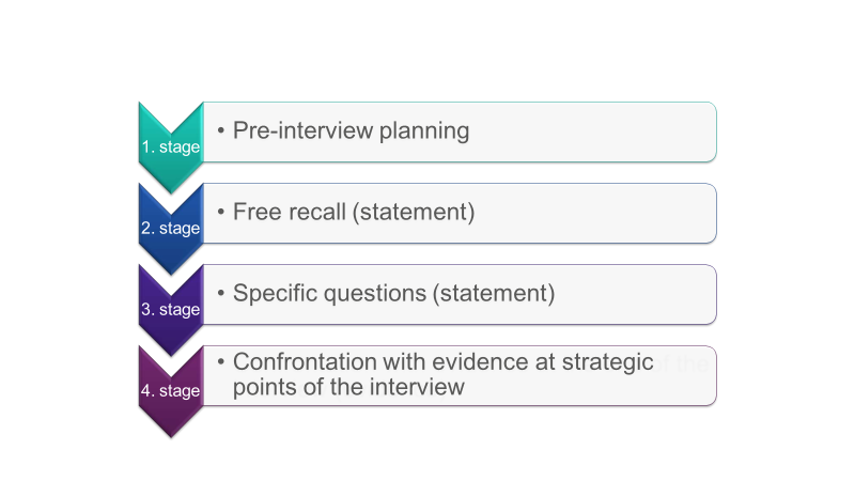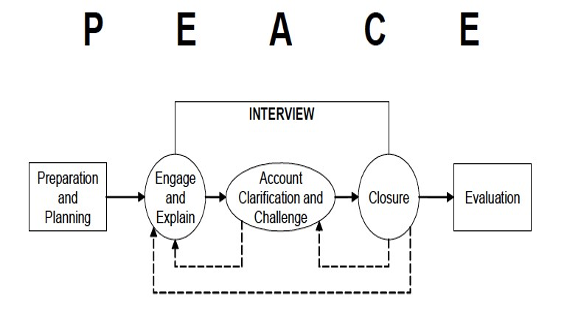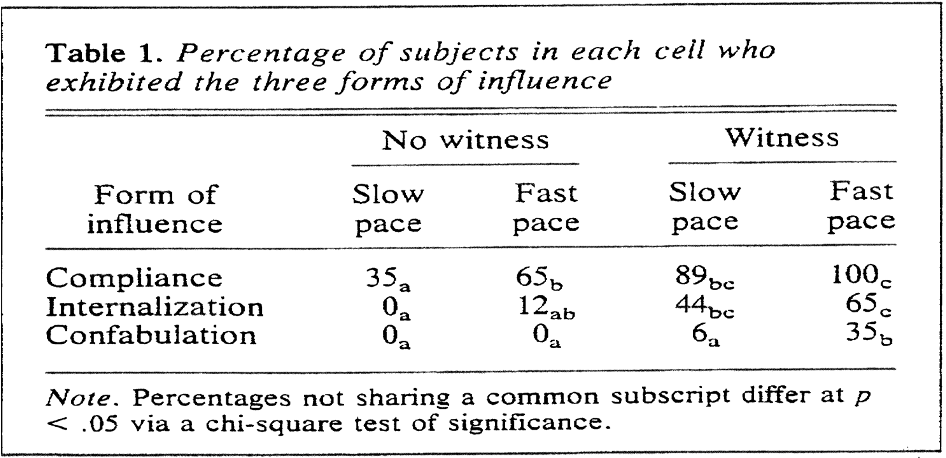False confessions
1/53
There's no tags or description
Looks like no tags are added yet.
Name | Mastery | Learn | Test | Matching | Spaced |
|---|
No study sessions yet.
54 Terms
what are the first instances of false confessions in histroy?
The great fire of London, the trial of Robert Hubert, 1666
What leads to suspect interviews?
identifying a suspect through:
crime scene evidence
witness and informants
personal judgement during pre- interrogation interview
physical appearance
suspects demeanour, micro-behaviours
What other reasons are suspects invited to an interview?
a witness (mis) reports seeing them
surveillance footage of the area
physical trace evidence
problematic relationship with the victim
history of similar crimes.
What is a confession?
an admission made by a defendent in criminal proceedings.
it is admissible evidence againts the person who made it- unless proven unreliable because:
physical impossibility to commit crime.
evidence establishing the defendants innocence (the real perpetrator is found and their guilt objectively demonstrated)
What is a false confession?
A false confession is an admission to a criminal act- usually accompanied by a narrative of how and why the crime occurred- that the confessor did not commit.
What are the problems when someone falsely confessions?
false confessions are difficult to discover.
no state or organisation keeps record of them.
they are typically not publicised.
What are the four possible interrogation outcomes?
| Confesses | Denies |
Innocent | False confession | Correct Acquittal |
Guilty | True confession | False Denial |
What are three types of false confession? (Kassin and Wrightsman, 1985)?
voluntary: made without any pressure from the outside. the person willingly knowingly confesses to a crime.
coerced-compliant: made only to avoid hard or to get a benefit.
coerced- internalised: people who make the confession actually come to believe they have committed the crime.
What is (1) voluntary false confession?
offered in the absence of any obvious external pressure.
to protect the real criminal (family, friend)
the individual is seeking publicity and fame- major criminal investiagtions
a guilt-ridden person, for reasons real or imagined, seeks absolution by confessing.
What is (2) Coerced-compliant false confessions?
An act of mere public compliance.
the suspects are fully aware that they are admitting to a crime they did not commit but bow to social pressure.
often based on the erroneous belief that the short-term benefits of a confession outweigh the long-term costs of a confession.
What is (3) coerced- internalised false confession?
the suspect, either temporarily or permanently, comes wrongly to believe during the police interrogation that they really did commit the crime of which they are accused.
it occurs when people develop a profound distrust of their own memory.
the memory is often so changed that the original memory becomes irretrievable.
What are the consequences of false confessions?
jurors and judges
eyewitnesses and alibi witnesses
forensic experts
What is the cumulative disadvantage frame work of fasle confessions?
general
What did Kassin, 2012 investiagte about the test of the corruptive confession’s hypothesis?
Archival analysis- DNA exonerated individuals who gave fasle confessions vs not.
Number and kind of errors- Multiple errors in 78% of confession cases vs 47% of no confession cases, 63% bad forensic science
despite standarisation and relibaility, contextual biases: other examiners and outside infor.
problem: they are blind that they are cognitively biased.
What is forensic confirmation bias?
self- fulfilling prophecy
confurmation bias
people seek out what they expect
people see what they expect
forsnsic confirmation bias
the effects through which an individual’s pre exisiting influences the collection, perception and interpretation of evidence during a criminal case.
Empirical evidence of forensic confirmation bias…
Lange et al (2011) Degraded speech studies.
recording of two people talking, filled with static.
“suspect” vs “job application” were heard saying gun and kill etc.
Kukucka 2014 handwriting evidence.
2 different handwriting: suspect and robbery note given to bank teller.
confession vs not.
the “confessed” was significantly more perceived as a match.
What are the confession effects of alibis?
Marion et al (2016) The Alibi witness experiment
Participant, confederate, and the jar with 20$ bills next door
All participants hear & partially see confederate working by next table
Stage 1 - Experimenter’s accusation - 92% provide alibi to confederate
Stage 2 – Experimenter tells update & asks for alibi confirmation
a) Confed denies stealing – 95% confirmed alibi
b) Confed confessed but immediately retracted – 45% confirmed alibi
c) Confed confessed – 20% confirmed alibi
Those who retracted alibi also described same Confed more negatively
What are the cumulative disadvantage framework of false confessions (Scherr et al, 2020)?
General consensus within the criminal justice system:
- False confessions are not a big problem, because of many “safety nets”
No - The system becomes worse & worse (especially for the innocent)
Innocents decide to talk to the police without a lawyer
After a confession - Confirmatory process across the board
Eyewitnesses, alibi witnesses, forensic examiners
The case becomes extremely strong against the suspect at trial
Even after free, the post-conviction life is ruined
What leads to a confession?
dispositional risk factors
innocence as risk factors
situational risk factors
What are dispositional risk factors?
a. adolescence and immaturity
b. cognitive and intellectual disability
c. personality and psychopathology
What is adolescence and immaturity?
Adolescents are less mature than adults, which manifests in:
impulsive decision making
decreased ability to consider long-term consequences.
engagement in risky behaviours
increased susceptibility to negative influences.
the development abilities are highly relevant to the behaviour in the interrogation room.
what are the Miranda rights?
you do not have to say anything,
anything you do say may become evidence at court
but it may harm your defence if you do not say
right to an attorney
What is the Reid technique?
Phase 1 – Non-confrontational Interview
Designed to detect if the suspect is lying or not
Phase 2 – Accusatory Interrogation
Designed to elicit a confession
What is the Reid technique- phase 1 of the interview?
Designed to decide whether to conduct a full interrogation
List of deception cues + 15 structured questions
Underlying idea: Anxiety triggered by hiding the truth
Mostly non-verbal cues
Some verbal statements
Final Decision based on: “Global assessment of suspect’s behaviour”
Problems
No scientific evidence for the deception cues
People try to hide that they are lying
People are bad at detecting liars
What is testing the Behaviour Analysis Interview (BAI)
DePaulo & Bond (2003): There are no behavioral cues to deception
Experimental evidence
US: Kassin & Fong (1999); Meissner & Kassin (2002)
Participants trained vs not in Reid Technique
Videotaped interviews of ppl who committed mock-crimes or not
On average – 56% accurate; 5.91 confident
Trained in BAI – 46% accurate; 6.55 confident
Police officers – 50% accurate; 7+ confident
UK: Vrij (2006); Participants commit mock crime (steal money) + incentivised to evade guilty identification during the BAI
Independent observers could not differentiate between guilty & innocent during the key behaviour eliciting questions
Questions not special
Behavioural cues listed not truly diagnostic
What is alternative 1- cognitive load theory (Vrii, 2008,2010)?
Lying is more cognitively demanding than truth-telling.
Cognitive demand can be interested in multiple ways during a police interview.
Reverse chronological order.
Forced to maintain eye contact
Occasional unexpected questions
Experimental evidence
Accuracy of raters in differentiating increased
Liars experienced it more demanding & their performance was more impaired
What is the altenative 2- strategic used of evidence (SUE) technique>
Training study
Accuracy rates increased:
Trained interviewers= 62%
Untrained interviewers = 43%

What is phase 2 of Reid technique?
Confrontational
1. Precondition
Isolation of the suspect- (alone, with just the interrogator)
In a specially designed room
- Small
- Windowless
- Soundproof
- 2 armless chairs and 1 desk
- 1-way mirror
2. The 9 steps of interrogation
What are the two structurak probkems of Reid techniques?
1. It has a “Milgramesque” nature – like the Milgram experiments
2. It is Guilt-presumptive
What is the milgramesque nature of interrogation?
• The subject is isolated (no friends, family or social support)
• In a specially & carefully designed space (lab vs “the box”)
• Confronted by an authority figure (experimenter vs detective)
• Contractual agreement
• Receiving payment ahead vs Volunteering
• Signing consent form vs the Miranda waiver
• Deception (cover-story vs “it serves your best interest”)
• Series of relentless demands (the Milgram prompts vs the Reid-technique – “No” is not accepted)
• Gradual escalation (15 V-s a time to 450 V – at the scene, minor role etc to full confession)
• Ethics (IRBs vs the “voluntariness” of the confession)
what is the guilt-presumptive nature of interrogation?
happens after stage 1 concluded that the person is probably lying.
the authority figure that leads it, already has the opinion that the person is guilty.
the measure of the interrogation success is: a confession
What is experimental evidence of cognitive and behavioural confirmation bias?
the classic “getting to know you” experiments
the partner (confederate) is an extroverted vs an introvert
self-fulfilling prophecy.
conceptual replication in legal setting: mock interrogates and suspects.
What is Conceptual replication in legal setting: mock interrogators & suspects (Kassin, Goldtein & Savistky, 2003)?
“Suspect” Participants made experimentally guilty vs innocent (commit mock crime vs not)
“Investigator” participants told – regardless of actual guilt - baseline probability (“most are innocent” vs “most are guilty”) or “guilty vs not guilty”
In “(most are) guilty” condition – tried harder: more coercive interrogation, incriminating questions
Independent evaluators listened to audiotapes or watched the videotapes
Judged “(most are) guilty” subjects as more guilty. Including the truly innocent.
What is the alternative: (Non-confrontational) PEACE method?
Developed in the UK in 1993 because of PACE (Police & Criminal Evidence Act; English Parliament, 1984) as a result of the Guilford 4 case
Non-confrontational Investigative Interviewing Technique
“Investigative mindset”: get as much information from the suspect as possible
Further “probing” questions
Inconsistencies challenged with further questions
2 types
Cognitive Interview (cooperative suspects)
Conversation Management (non-cooperative suspects)
Evidence about success still inconclusive
It appears: Confession rate same overall (50%), but less false
Possible that Reid-like things still happen
but outside of the actual official questioning of suspects
What is the PEACE method?
P Planning and preparation
E Engage and explain
A Account, clarify and challenge
C Closure
E Evaluation

What are the interrogation methods:information gathering vs accusatorial?
Information-Gathering Methods - PEACE (UK) | Accusatorial Methods – Reid Technique (USA) |
Establish rapport | Establish control |
Use direct, positive confrontation. | Use psychological manipulation |
Employ open-ended, exploratory questions | Employ closed- ended, confirmatory questions |
Primary goals is to elicit information | Primary goals is to obtain a confession |
Focus on cognitive cues to deception | Focus on anxiety to deception. |
What are the innocence as risk factors?
The psychology of innocence
innocents have the tendency to ‘tell it like it was’ and think that ‘their innocence will shine through’ and truth will prevail.
wave miranda rights- talk to police without legal help (instead of remaining silent)
more likely confess during difficult interrogations.
What is beleif in “just world”?
people tend to overestimate the extent to which their true thought, emotion, and other inner states can be seen by others.
What is illusion of transparency?
-- people tend to overestimate the extent to which their true thoughts, emotions, and other inner states can be seen by others.
What are the situational risk factors?
a) Factors exacerbating short-sighted decision-making
b) Lying & Presentation of False Evidence
c) Minimization & Maximization
What is confession as decision-making? (Yang et al, 2017)
• Temporal discounting
• Preference for the smaller, immediate reward vs. larger, delayed reward (2 £ now, 5 £ in a month)
• Conceptual replication in legal setting
• Smaller immediate consequence: immediate brief follow-up questions
• Larger later consequence: meet-up for a longer interview later
• The further away is the distal, the more pronounced the effect
• Stopping the process NOW
what is factor (A) of exacerbating short-sighted decision-making?
a) Physical Custodial and Isolation (Madon et al, 2013)
• Interrogation outside familiar surroundings
• Duration of interrogation
– Recommendation: 30 minutes; maybe 2-ish
– In proven cases of false confessions:
• 34% = 6-12 hours
• 39% = 12-24hours
• Mean = 16.3 hours
What is factor (b) of exacerbating short-sighted decision making?
b) Sleep deprivation (Frenda et al, 2016)
Sleep deprivation may accompany prolonged periods of isolation and can heighten susceptibility to influence and impair decision-making abilities in complex tasks.
What us factor (C) of exacerbating short- sighted decision making?
C) Fatigue and self-regulation decline (Davis and Leo, 2012)
False confessions usually happen at off-peak hours (late-night or early morning)
• Fatigue + hunger/thirst self-control decline
• Cognitive functions
• Memory consolidation & distortions, real/unreal
• Rational analysis & evaluation less resistant to persuasion
• Impulse-control & emotion-regulation
• Immediate impulses > Long-term goals
Lying and presentation of false evidence
Target event -> false evidence -> including a flase confession
What is lying an presentation of false evidence?
2 classic experiment paradigms
The ALT key experimental paradigm- what leadds to internalisation and confabulation?
The cheating experiment paradigm- the effect of presentation of false evidece?
What is the ALT key experiment?
Research Question
How easy do people confess falsely?
Conditions
IV1 = vulnerability (high vs. low)
IV2 = witness (presence vs. absence)
Reaction Time Task
Confederate reads letters to be typed at either fast or slow pace
Subjects instructed not to hit the ALT key because computer would crash
Computer Crash
The computer appears to crash after 1 minute
Distressed experimenter enteres & asks subject if they pressed the ALT key
Witness statement
- A confederate tells she saw subject hit the ALT key or “I did not see anything.”
Request
Compliance: subjects asked to sign a “confession”
Internalization: tells second confederate “He says I hit the Alt- key” vs. “I hit the Alt-key”)
Confabulation: At a later time some of these participants “reconstruct" how they hit the ALT key (adding specific specific details)
What is the ALT key experiment at a Glance?
signed confession (compliance)
hallway confederate (internalization)
details provided (confabulation)
slow vs fast pace
no witness vs witness

What is the cheating studies- presentation of false evidence Phase 1?
The participants were told:
• This is a study about gambling behaviour when individuals gamble with physical vs. virtual money
• Task: win as much money as possible by answering 15 questions correctly
• When you are wrong (red cross) = return money
• When you are correct (green tick) = take money
• (You were filmed while playing)
Video was created:
The resulting clip ostensibly showed the subject collecting money from the bank when they should have returned it: signs on screen changed.
What is the cheating studies experiment (Phase 2) and (Phase 3)?
Phase 2: false evidence
Participants were told:
• There was a problem in the earlier session: the video showed that you took money from the bank when you had given an incorrect answer
Phase 3: including a false confession
All subjects were asked to sign a confession form:
• If they sign => no reception of payment
• If they did not sign => meet the professor in
charge
What is the minimisation: promises implied but not spoken?
Establishment of superficial friendship & fake kindness
Interrogators are trained to minimize the crime through "theme development“
a process of providing moral justification or face-saving excuses (e.g. blaming the victim)
Minimize the seriousness of the situation
making confession seems like an expedient means of escape
Research shows that minimization is particularly harmful!
Suspects infer leniency in sentencing
Experimental subjects estimate the same sentence as if leniency was explicitly promised
What is evidence of minimisation as risk factors?
People are “reading between the lines”
Experimental evidence --
Estimate equally low punishment for minimisation & leniency scenarios (Kassin & McNall, 1991)
More likely to sign a confession in mock crime studies (Russano, 2005)
IV 1 (cheating vs not: helping a confederate in a quiz-game)
IV 2: participants told: explicit leniency vs minimisation vs nothing
DV: Sign a confession – 6% if nothing was told; 18% if minimisation (19% if explicit leniency)
What can be done? fixing parts of the interrogation techniques?
Video recording of interrogations
Education on the Pseudoscience of Lie Detection
Banning the False Evidence lies during interrogations
Allowed only in very few Western countries
Banning Minimisation strategies that imply leniency
Explicit promises of leniency are banned
Replacing the Reid technique with other ones
E.g. PEACE
What is video recording of interrogations?
video recording
permanent, objective record.
even if there is a recording, jurors see only a “recap” (of about 30 minuets)
usually, the end-product of a long process.
even if people know the interrogation and coerceive, they do not discount it.
the cameras point of view matters
Suspect only vs. Equal-focus camera
True both for jurors & highly experienced judges
Time Limits on Interrogations
No more than 4 hours
False confessions usually follow a 6+ hour interrogation (Davis & Donahue, 2004)
What is camera perspective bias?
• 2 people facing each other and having a conversation
• Viewers sitting around in circle
• Who do the they attribute more influence?
• Lassiter’s Camera Focus experiments
• Videotaped mock interrogations in his laboratory.
• 3 camera angles: suspect vs interrogator vs both
• Randomly assigned p-s to watch one camera angle
• Asked: Was the situation coercive? Was the statement voluntary?
• If suspect in focus – less coercive & more voluntary.
• Results identical for laypeople & expert trial judges (Lassiter, 2007).